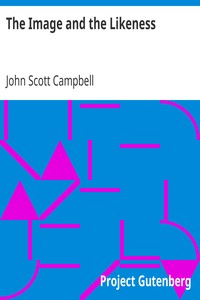The Image and the Likeness by John Scott Campbell
"The Image and the Likeness" by John Scott Campbell is a science fiction novel likely written in the mid-20th century. The narrative unfolds in a post-war Asia where a group of anthropologists and a zoologist embark on an expedition to understand "New Buddhism," a nationalistic religion gaining traction in Pan-Asia. However, their journey leads them to discover a colossal figure known as Kazu Takahashi, believed to be the reincarnation of Buddha, who
has been affected by the aftermath of the Hiroshima bombing, raising themes of identity, power, and the intersection of science and mythology. The opening of the novel introduces us to a group of four scientists—William Cady, Llewelyn Baker, Walter Chamberlin, and Robert Martin—who arrive in Shanghai in 1965, keenly aware of the political changes in the region. Their expedition ostensibly revolves around studying Celebese man, yet they are also secretly tasked with investigating New Buddhism, which harbors potential ties to communist movements. As they dive deeper into their mission, they witness an unexpected phenomenon: the awakening of Kazu, an enormous entity that challenges their notions of life and reality. The narrative captures their escalating fears and the dangerous knowledge they unveil, ultimately compelling them to confront Kazu's true nature and the implications of their discoveries on both a personal and global scale. (This is an automatically generated summary.)
Read or download for free
| How to read | Url | Size | |||
|---|---|---|---|---|---|
| Read now! | https://www.gutenberg.org/ebooks/37145.html.images | 181 kB | |||
| EPUB3 (E-readers incl. Send-to-Kindle) | https://www.gutenberg.org/ebooks/37145.epub3.images | 228 kB | |||
| EPUB (older E-readers) | https://www.gutenberg.org/ebooks/37145.epub.images | 230 kB | |||
| EPUB (no images, older E-readers) | https://www.gutenberg.org/ebooks/37145.epub.noimages | 147 kB | |||
| Kindle | https://www.gutenberg.org/ebooks/37145.kf8.images | 340 kB | |||
| older Kindles | https://www.gutenberg.org/ebooks/37145.kindle.images | 323 kB | |||
| Plain Text UTF-8 | https://www.gutenberg.org/ebooks/37145.txt.utf-8 | 168 kB | |||
| Download HTML (zip) | https://www.gutenberg.org/cache/epub/37145/pg37145-h.zip | 232 kB | |||
| There may be more files related to this item. | |||||
Similar Books
About this eBook
| Author | Campbell, John Scott |
|---|---|
| Title | The Image and the Likeness |
| Series Title | Produced from IF Worlds of Science Fiction November 1952. |
| Credits |
Produced by Greg Weeks, Dianna Adair and the Online Distributed Proofreading Team at www.pgdp.net |
| Reading Level | Reading ease score: 81.3 (6th grade). Easy to read. |
| Language | English |
| LoC Class | PS: Language and Literatures: American and Canadian literature |
| Subject | Science fiction |
| Subject | Giants -- Fiction |
| Subject | East and West -- Fiction |
| Category | Text |
| EBook-No. | 37145 |
| Release Date | Aug 21, 2011 |
| Copyright Status | Public domain in the USA. |
| Downloads | 390 downloads in the last 30 days. |
| Project Gutenberg eBooks are always free! | |

